Cursed: On the set of Netflix's Arthurian hit
The tale of the Lady of the Lake gets a feminist twist in Netflix's latest series, Cursed. SFX magazine heads to the set and meets showrunner Tom Wheeler to talk about his young cast
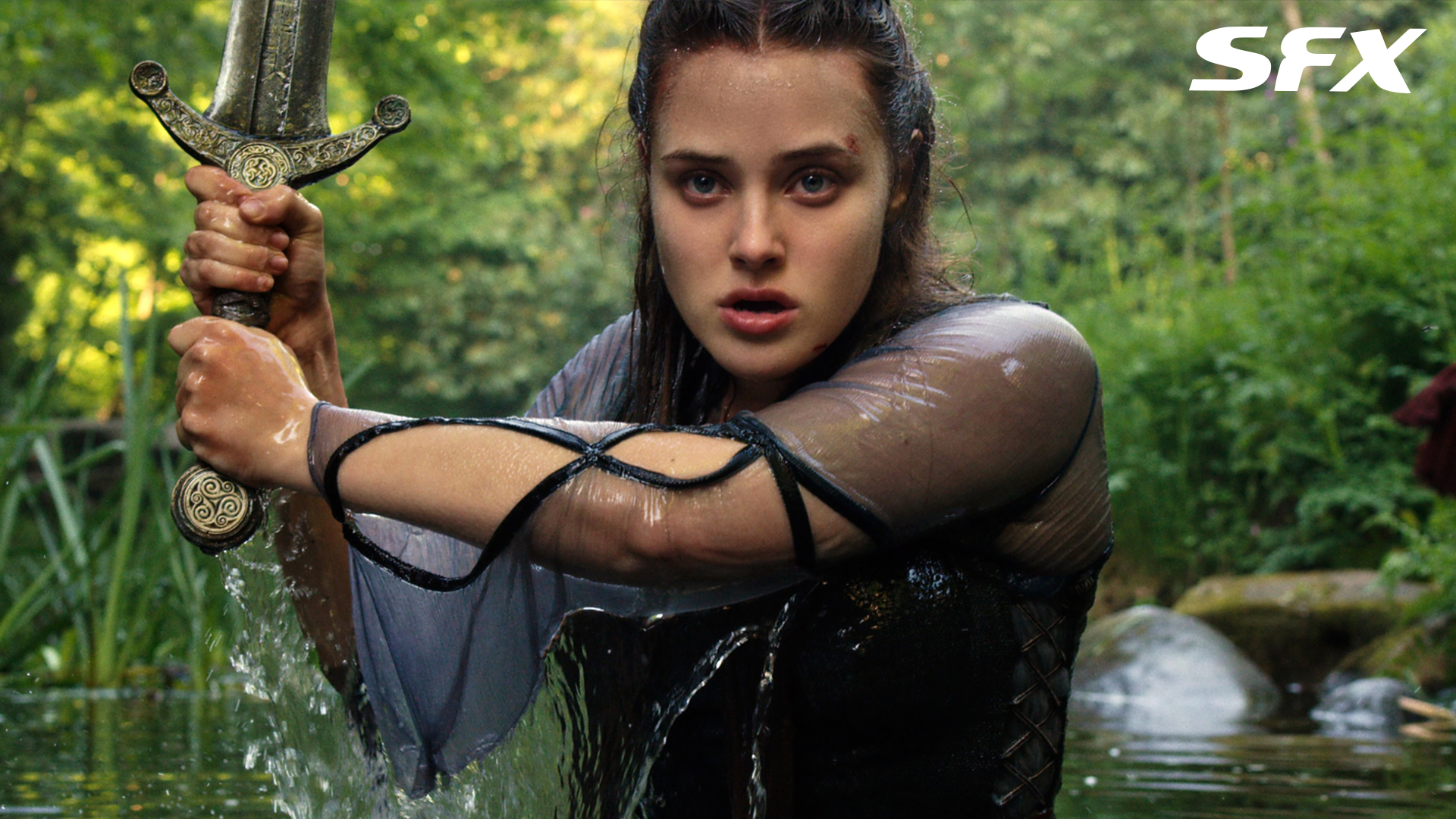
What image does the phrase “refugee camp” bring to mind? Rows of tents, perhaps, or rudimentary shelters cobbled together from cardboard and scrap wood. Well, the one SFX is exploring right now is rather different. For one thing, it’s utterly deserted. This roughly circular chamber is surrounded by carved polystyrene walls, painted to resemble rock. Wood chippings give softly underfoot. Alcoves people have made into their dwelling places are dressed with fox skins and antlers, or shadowed by canopies covered with patches of moss. Crude steps lead up to a short bridge, whose sides are enveloped in tangled branches. Ducking under that, we regard the trappings of everyday life scattered about: slices of log serving as seats; old pots and bowls of berries; a rack of swords and... hang on, recyclable coffee cups?!
In the realm of fiction, we’re in a meeting place for various tribes of the Fey, who are fleeing from persecution. In reality, we’re on Stage B of Langley Studios, near Slough. Here the crew of Cursed are entering the final stages of a 10-month shoot as they film the concluding episode of this 10-part series for Netflix, which takes Arthurian legend and twists it into strange new shapes.
Miller Time
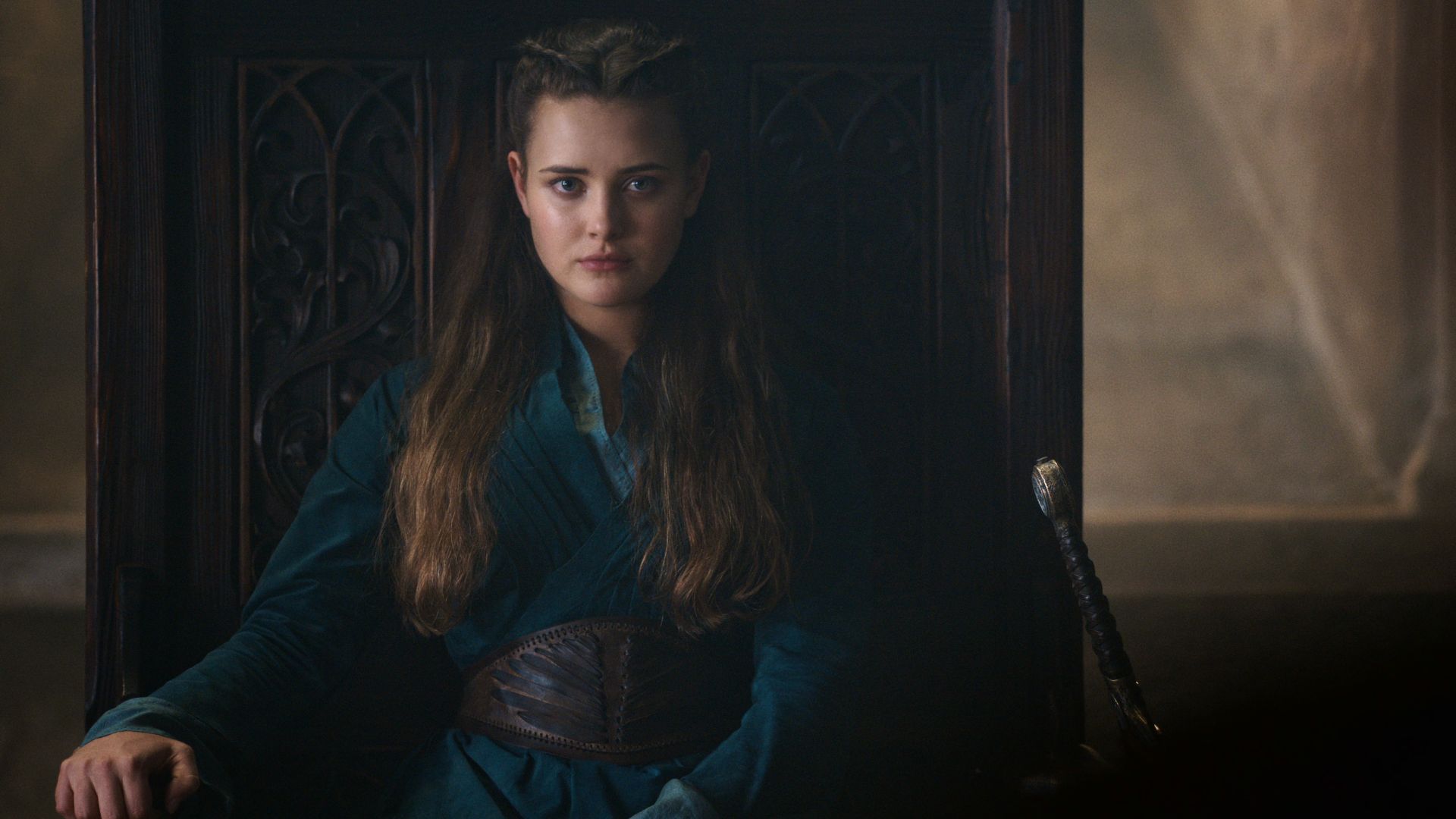
It’s the brainchild of American producer Tom Wheeler (who previously created short-lived superhero drama The Cape), in collaboration with comics great Frank Miller. The concept arose from some rather vague initial discussions. “We were just talking about worlds,” the showrunner tells SFX, “and I gave him a snippet of an idea that had something to do with the Arthurian mythos. I hadn’t seen him do straight-up fantasy – and that was exciting to me, and him.
“But King Arthur is really well-trodden territory. So it was: how could we do it differently? Which led us to the story of Nimue and the Lady of the Lake, and unpacking some women heroes in the mythos that maybe hadn’t quite gotten their dues.”
- Get features like this, and more, sent directly to your door by subscribing to SFX Magazine today
This brainstorming led to Wheeler proposing a YA novel, illustrated by Miller – and eventually published last year. In the midst of work on that, Netflix got wind of the project, and proposed an adaptation.
The series’ title refers to its heroine, Nimue (pronounced Nim-way), aka the Lady of the Lake. Other familiar figures feature (several of whom we don’t initially realise are figures from Arthurian lore). They include Arthur (played by Devon Terrell, who was Barack Obama in biopic Barry) as a young mercenary, and Merlin (portrayed by Vikings’ Gustaf Skarsgård as a drunk who has lost his powers). But this is very much a female-centric take.
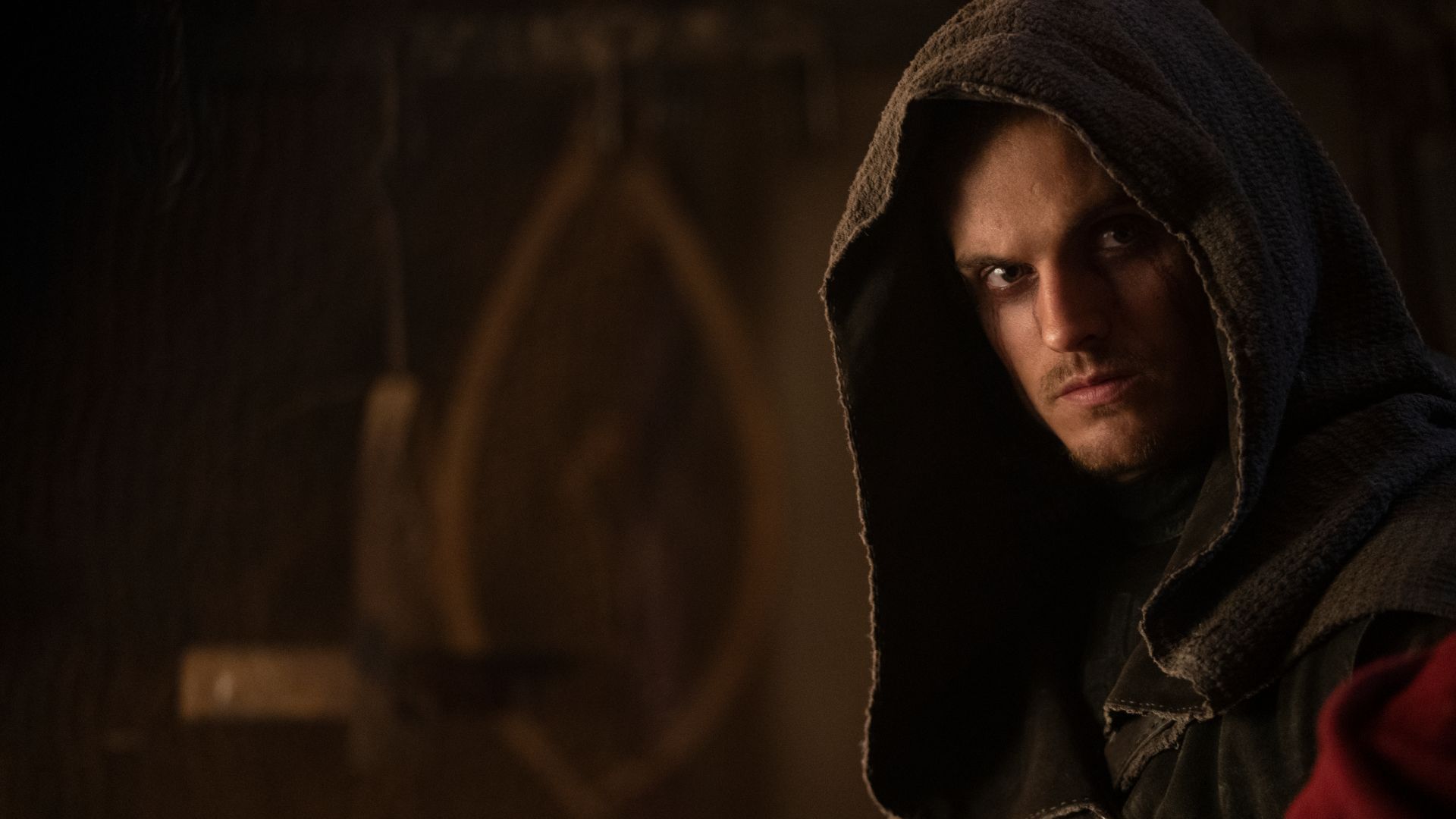
The Lady of the Lake has had numerous wildly varying interpretations over the centuries. In some, she’s the villainous Viviane, who traps Merlin in a cave. In others she’s a benevolent figure, who raises Lancelot and acts as an adviser to Arthur. This “before Arthur and the sword” series (as Wheeler describes it) presents an origin story for the character, and begins with Nimue (13 Reasons Why’s Katherine Langford) still on the path to her legendary destiny, with some way to go before she achieves self-acceptance.
Sign up to the SFX Newsletter
Get sneak previews, exclusive competitions and details of special events each month!
“I have teenagers,” Wheeler says, explaining the title, “and with their problems, they feel, ‘My differences – not fitting in, not being accepted, that’s my curse.’ Then we grow and realise that perhaps these are our advantages; what distinguishes and defines us. But there’s also a literal thing that happens to her in childhood that feels like a curse, and scars – literal scars – that she carries, that define her in her village. There’s this mark of the dark gods – related, perhaps, to her bloodline...”
Nimue is also struggling with powers she can’t initially control. “She’s Fey-kind,” Wheeler explains. “They’ve been pushed out by the church, and hunted, so they live in hiding. There are several different clans. They look different, and have different abilities and different connections to the Hidden, the spirit source of their power. Nimue’s from a clan called the Sky Folk, which has a unique connection to nature magic. In her, it expresses itself through really emotional, uncontrolled bursts of roots and trees coming alive. It’s very frightening to her. For her, the aperture is so open: it floods through her, and she can’t really control it. Understanding why she’s different becomes part of the mystery of her journey, and what she has
to uncover.”
The Arthur Rackham illustrations in an edition of Thomas Malory’s Le Morte d’Arthur belonging to Frank Miller’s mother were a huge inspiration on what Wheeler describes as the project’s “dark fairytale aspect”. There are no Fey extras on-set today, but we do get a good idea of what the various tribes look like via photos of the first make-up tests, displayed on the walls of the production office.
Fey Liberation
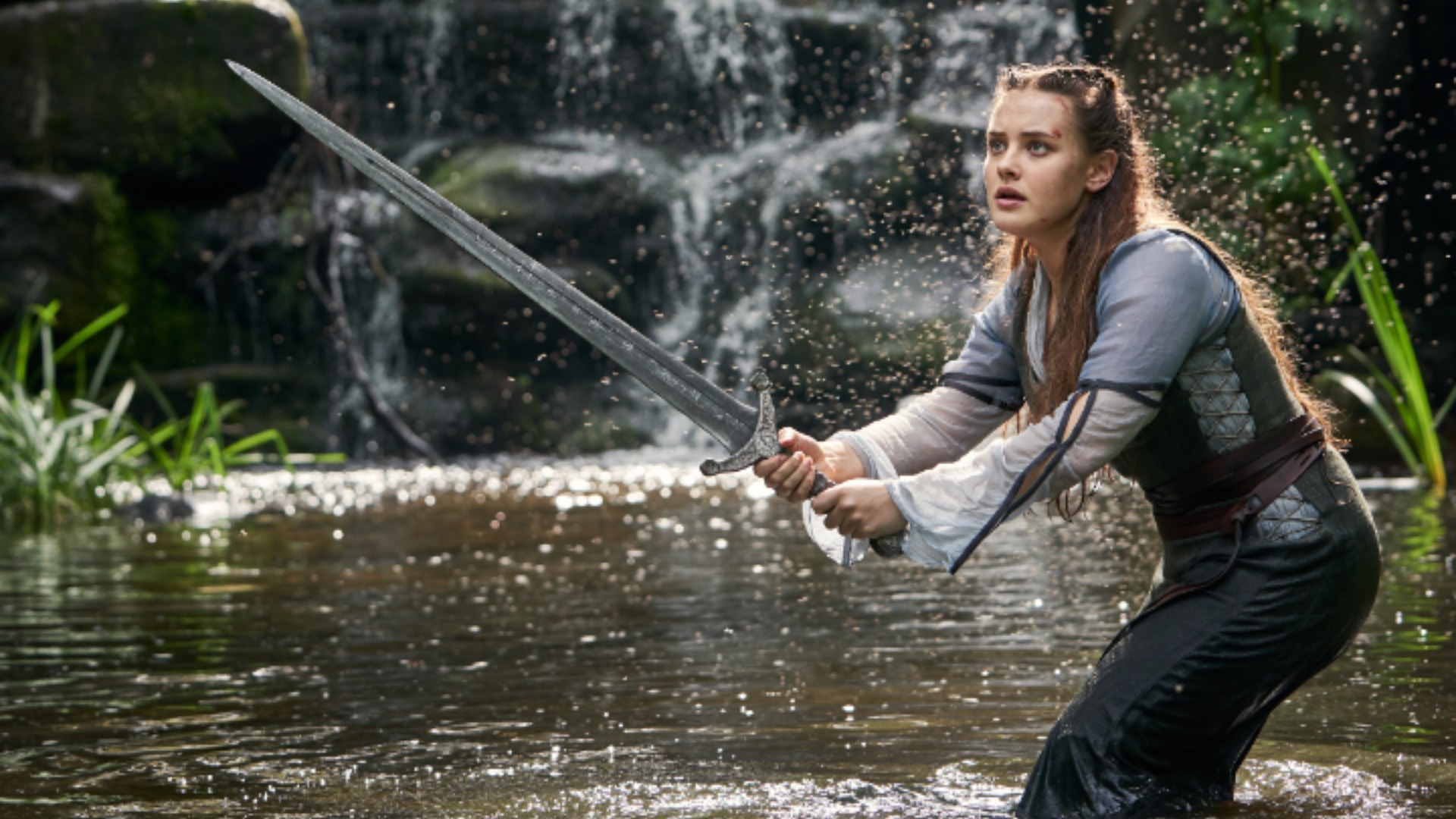
It’s a cavalcade of the outlandish. There are fauns with bushy brows and horns (for which they cast real roe deer horns), and beings with tusks growing behind their ears or out of their cheekbones. Then there are tribes like the Cliff Walkers, initially conceived as having stone skin; the scaly Snake People, for whom alligators were one reference; and the blue- skinned Moon Wings, for which the designer drew on the Draco lizard, which glides on wing-like folds of skin. All are despised for their ungodly otherness by the villains of the piece: the Red Paladins, Isis-like religious zealots led by Father Carden, a soldier turned priest played by veteran Scottish actor Peter Mullan (Westworld).
“There’s a drought happening that’s caused a lot of anger and fear,” Wheeler explains. “The Fey, because of their connection to nature, have more facility with the land, so they get blamed. That gives rise to all kinds of buried prejudices. Father Carden has created this sect, this branch of the Church. He’s a monster, and feels it’s his duty to destroy the Fey, wipe them out. They’re on this brutal campaign to burn them from their homes. So Nimue becomes one of these people running – I’ve described the first couple of episodes as sort of the fantasy version of The Fugitive or Run Lola Run. Then, through accidental acts of courage, she finds herself in a leadership role.”
It’s a scenario with obvious topical echoes of the way that the refugee crisis has fed into the rise of right-wing populism, as Wheeler acknowledges. “It’s character first,” he emphasises, lest we think he’s merely proselytising.
“But yeah, inevitably today finds a way to filter in, because that’s just what you’re thinking about. Then you realise, ‘This is really a story about the complications of great movements of refugees and what happens when people are displaced – the domino effect that takes place politically, and how people can take advantage of that, wanting to find a scapegoat for their issues.”
The brutality of the Red Paladins means that while the world of Cursed is no match for Westeros (“We’re not at a Game Of Thrones level of violence or sexuality,” Wheeler clarifies, “it’s more of an all-audiences story”), it’s grittier than you might expect for a YA adaptation. In episode one, we see the Paladins not only crucifying victims, but then setting fire to the crucifixes. Belt and braces, eh? On arrival in the studio’s reception area, a large package labelled “cut-off corpse head display” rather clued us in to this. A visit to the make-up department, where we found staff hard at work freshening up lopped-off limbs, torn torsos and decapitated heads underlined it.
We get to witness the Red Paladins’ cruelty at close quarters as we observe the filming of scenes set in a “torture tent” in their encampment. First we catch fragments of a confrontation between Gawain (Misfits’ Matt Stokoe) – described by Wheeler as “leader of the Fey resistance, alongside Nimue” – and the Weeping Monk, a sinister hooded figure with a giant cross on his tunic and what look like twin blood trails running down from his eyes. We glimpse the tail-end of a shot of Gawain tied to a chair. Then the camera pans across an array of glistening torture implements... coming to rest on a human ear.
A crew member preps the tools for a take by squirting a dash of fake blood from the sort of squeezy bottle you’d usually use to apply ketchup to a hot dog. Next, the crew heat up coals with a blowtorch, so that a set of branding irons (each ending in a sinister sigil) glow red and start to smoke. It’s hard to hear much over the roar of rain pounding on the roof of the studio (formerly – oh the glamour – a Royal Mail sorting office).
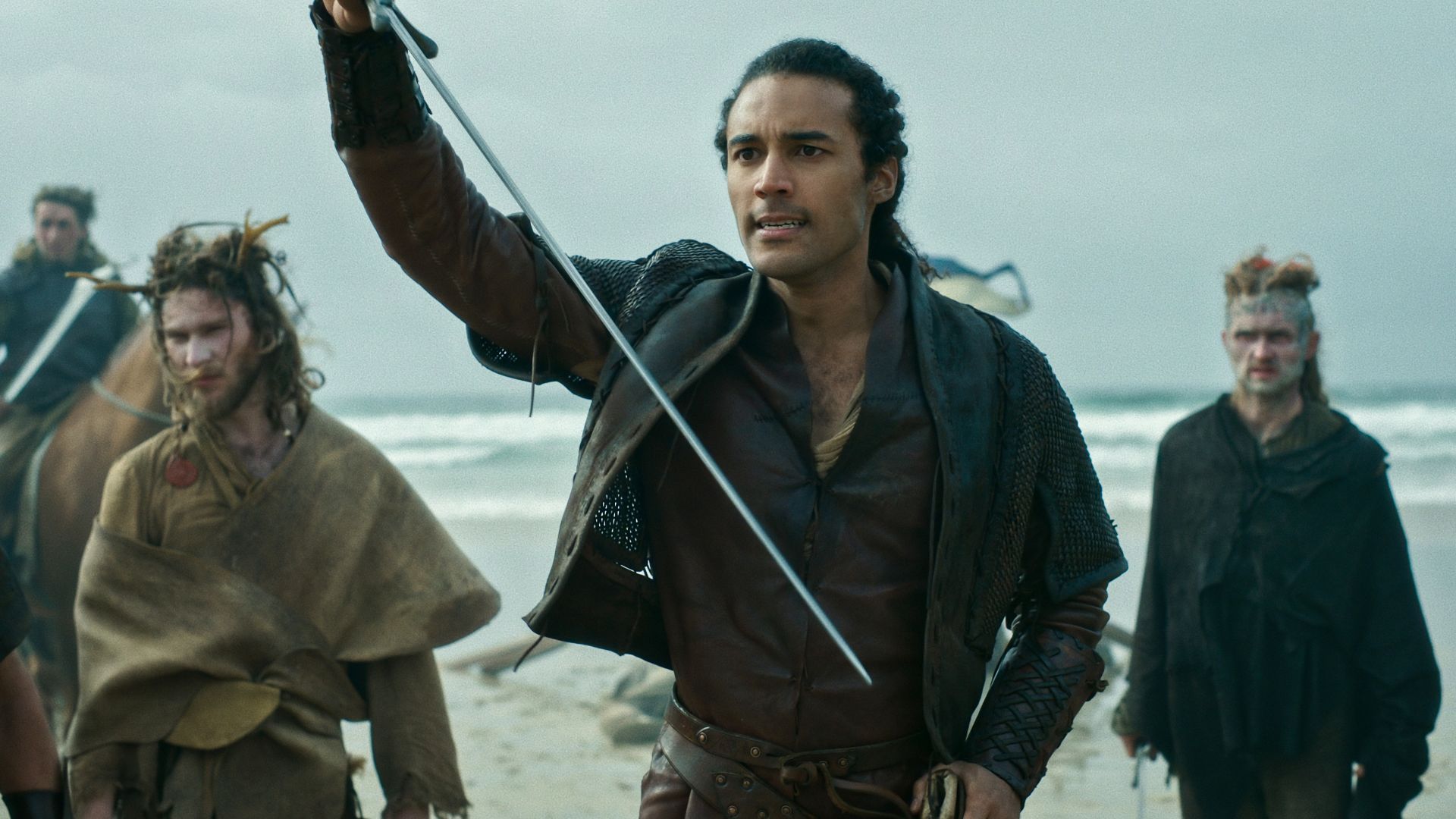
Once the downpour has abated, it’s lippy lad Squirrel’s time in the chair. We watch as this sidekick of Nimue’s faces off against a blind Paladin torturer called Brother Salt – blind quite by choice, stitch marks around his eyes suggest. (Well, it’s one way to “see no evil”...) Despite looking about eight, the boy’s utterly fearless. “Shall we play now?” the Paladin gloats, breathing heavily as he carefully selects a blade. “The tongue first, I think.” “Go on, take it!” Squirrel retorts. “I’ll still keep talking. I’ll be in your nightmares, talking, telling you how ugly you are. And when you try to wake up, your eyes won’t open – because you sewed them up, like a bloody idiot!”
Burn! During a pause in shooting we grab a quick word with Billy Jenkins (previously Synth child Sam in Humans) – who, at the ripe old age of 12, is older than he looks. So, where’s Squirrel’s bushy tail? “Yeah, when I got the part I thought I’d have to dress up in a squirrel costume,” the precocious young actor says – almost certainly pulling our leg – before explaining the nickname.
“He’s called Squirrel because he runs about everywhere being mischievous, and he’s a really good climber. When I first read the script I was like, ‘Whoa, he’s so like me – he’s kind of naughty!’ I love the part because he’s really brave, and he never shows his feelings – he keeps it all inside.”
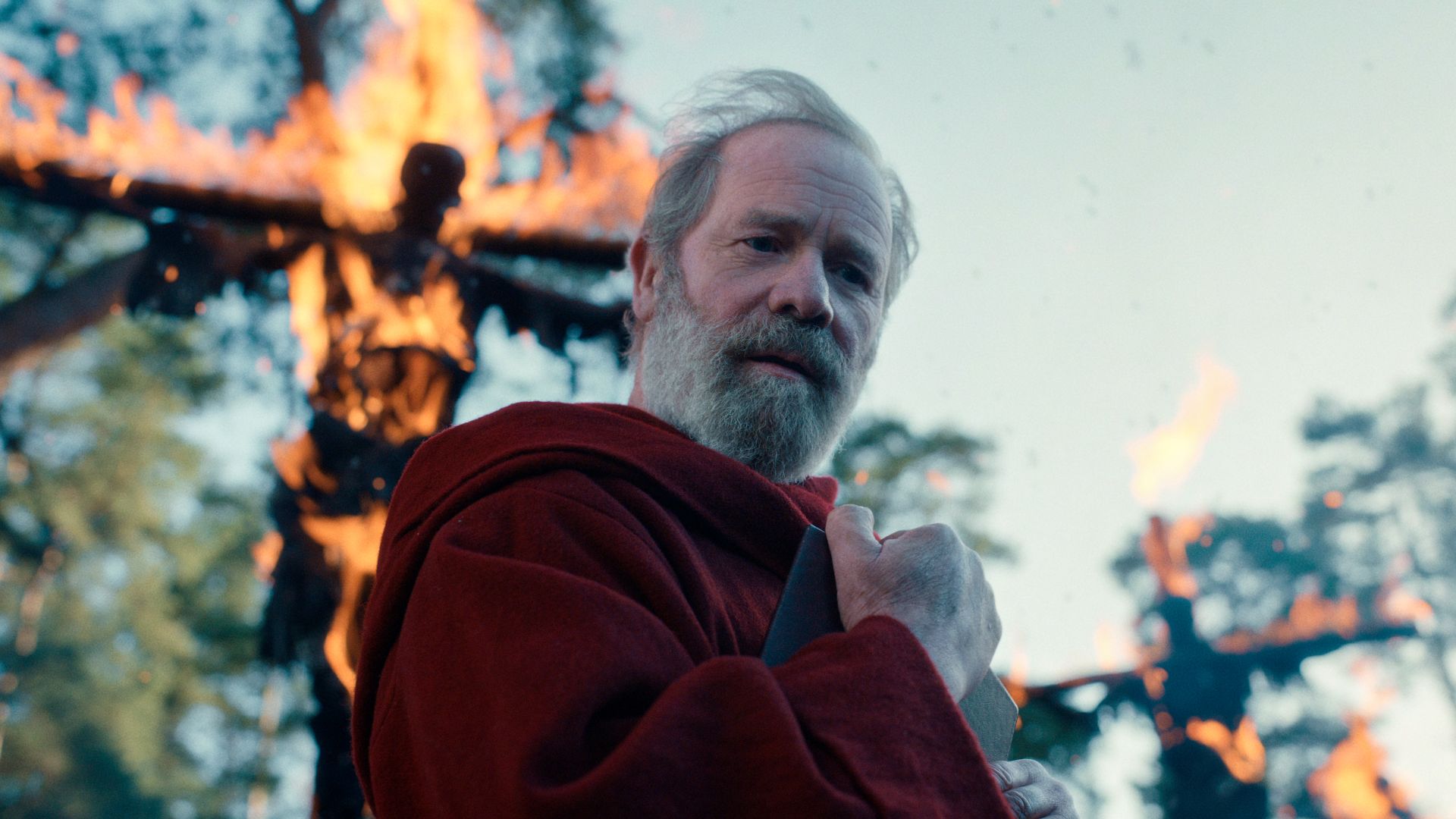
Bravery is a quality Nimue possesses in abundance too – and whether Cursed is a success, or lives up to its title will depend in large part on its resourceful heroine. When we ask the showrunner how he hopes viewers will respond, it’s clear that more than anything else he wants this fresh take on Arthurian lore to resonate with female viewers.
“Frank has a great history of really strong women characters – Elektra and [The Dark Knight Returns’] Carrie Kelley are very independent and strong-minded,” Wheeler notes. “And Nimue’s been a fun character to write, because she’s one of these characters that goes into scenes and just takes over. She’s really strong. She’s impulsive, doesn’t always make the right decision. And I wanted her to make big mistakes along the way. I think her flaws are what make her interesting. The aim was to create a dimensional heroine that possesses a willingness to overcome her obstacles, and grow into self-acceptance.”
“It meant a lot to me to try and look at it from a feminist perspective,” the showrunner stresses, recalling his own childhood love of this ancient legend, sparked by John Boorman’s 1981 movie Excalibur. “My 12-year-old daughter doesn’t necessarily have the touchstone characters in this mythology that I had as a kid.
“So it felt appealing to suggest that a young woman held the sword of power before Arthur: to ask, ‘Who was Arthur’s mentor before Merlin?’, and, ‘How flexible can the mythology be, to bring everyone into the story?’ Because I want my daughter to feel her own ability to seize the sword – just as I felt this connection with Arthur and the sword, these symbols that are so iconic and powerful.”
This feature originally appeared in SFX Magazine's Flash Gordon 40th anniversary issue. Order a hard copy now!
Ian Berriman has been working for SFX – the world's leading sci-fi, fantasy and horror magazine – since March 2002. He's also a regular writer for Electronic Sound. Other publications he's contributed to include Total Film, When Saturday Comes, Retro Pop, Horrorville, and What DVD. A life-long Doctor Who fan, he's also a supporter of Hull City, and live-tweets along to BBC Four's Top Of The Pops repeats from his @TOTPFacts account.


